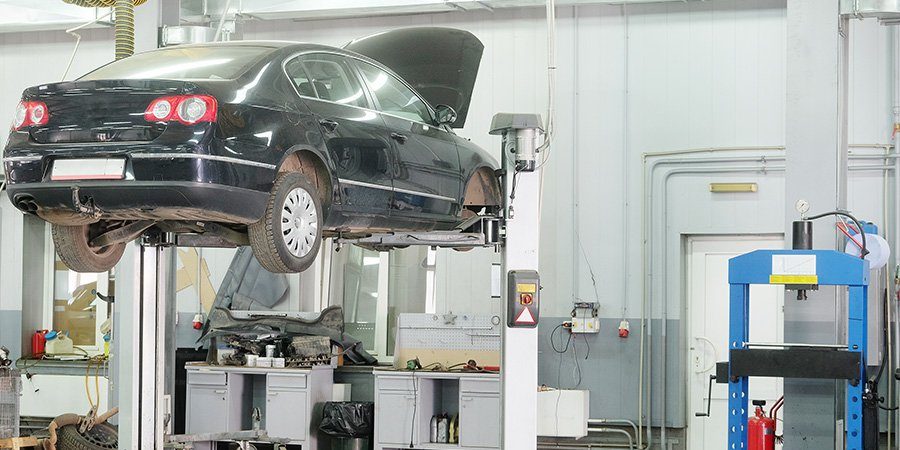Why Implementing a Complimentary Maintenance Program Is Not a DIY Project
More Than Just Oil Changes
Cleaning gutters. Painting fences. Sometimes, it pays to do it yourself.
But when it comes to an auto dealership implementing a complimentary maintenance program, DIY may not be the best approach.
At Performance Administration Corp., we deliver personalized maintenance program administration to franchise auto dealerships, auto dealership groups, and sponsored-level corporations that are guaranteed to create return buyers, increase customer retention and drive dealership profitability.
We guarantee results —double or triple CP/RO visits and higher return buyer vehicle repurchase rates —but, still, some dealerships would rather just “do it themselves.” The problem is, this DIY project isn’t something you can knock out on a Sunday morning. It takes knowledge, expertise, and commitment. Often, like a home handyman who bites off more than he can chew, a dealership finds itself spending a lot more time, money, and resources than they would have if they just enlisted the help of a trained professional.
On top of that, there’s no control. Without a really good sophisticated claims administration system, a dealership could end up putting away $100 to pay for maintenance for a customer, and then end up paying out $200 in oil change claims because no one’s watching the program.
That’s where we come in —we’re the watchdog of the reserve pool. It’s one of the reasons people trust us. We’ve seen first-hand that doing it yourself sounds simple, but when you get out to price changes, vehicle wraps, and all those other things that pop up as time goes on, it becomes more and more unwieldy and very tough to manage. It loses its focus and its benefits.
Here’s why simply telling customers, “We’re just going to give you free oil changes,” is the worst way to market a prepaid complimentary maintenance program.
The Pitfalls of Doing it Yourself
With complimentary maintenance programs, like any other project or program, it all comes down to the details. In-house maintenance programs often fail because no one is tracking the plan every step of the way. We’ve seen it —a customer gets logged into the system, something simple like, “This customer is a free-maintenance customer,” or, “He has a 12-month maintenance contract,” gets posted in the DMS, the dealer sets aside, say, $35 dollars for oil changes, and then 6 months goes by, and everybody forgets about it. The next thing you know, service is charging $59 for those oil changes. Then diesel comes in, and they’re charging $110. We’ve seen stores that were upside down 100% on the revenue side.
Did that program accomplish what that dealership wanted? Sure, the customer got his oil changes. Did it have a cost? Absolutely. The dealership thought it was saving money on administration costs, but in the end, it ended up paying three or four times what they would’ve spent to pay a professional administration company to run their plan.
It goes beyond wasting money. We’ve heard other dealerships say, “Well, we’ve got this new plan, and we’re going to have Betty in the office keep track of it. We’re going to make a labor-op code, and we’ll call it ‘FREELOF’ or ‘CPLOF’ or whatever we want, and then we’re going to bring these monies in. We’re going to set this reserve pool aside to pay claims, and then as the claims come in, Betty will reconcile them.”
Needless to say, that did not end well. It’s very hard to reconcile when you don’t have a control system. Turns out, some of Betty’s stores found out that they had no marketing, and the customers that were using the program were getting twice as many services as they should. In most cases, the service departments were charging more money than the dealerships had in the reserve pool. Not only that, all the people that the dealerships were trying to affect, the people who were not service-loyal, they never came and nobody called them.
If you don’t have someone in total control of your complimentary maintenance program, there will be no focus on customer retention, and it will be really difficult to reach your goals. Utilizing a professional third-party administrator, however, is like working with a trusted financial planner —you know that they’re going to take care of you, and help you accomplish what you want to accomplish.
Finally, larger, publicly-traded dealer groups should never try to “do it themselves,” because of liability. But, with our administrator obligor program, Performance Protection Corp. becomes the obligor to the consumer. We’re able to keep your plan fully insured and drive the customers back, but now the contract is between the consumer and Performance Protection Corp., which will give a level of comfort to the legal staff at the major dealer corporation that’s either large or publicly traded.
The Other Costs You’re Not Considering
Microsoft Excel is a great tool for business, there’s no denying it. But when you want to implement a truly effective prepaid complimentary maintenance program, you need more powerful software. We’ve done over 1,000,000 contracts, so the cost of our software is split amongst all those customers. We know the expense that it takes to write all this software, but there will always be that dealership that says, “We’ll just use Excel and if that doesn’t work, we’ll hire a developer to write a quick database in Access.”
What these dealerships aren’t considering is just how expensive software developers are. Then you have marketing costs —creating professional marketing materials, sending out custom-printed, personalized welcome gifts for each customer, etc. —and you still have to do all the claims administration!
If you go this route, you’ll be burning through money pretty quickly, which is the main thing you’re trying to avoid by implementing an in-house maintenance program. Again, you’re spending more time, energy, attention, and resources than you ever thought you would.
The Right Tools For the Job
A big reason our complimentary maintenance programs are so effective is because we have tailor-made tools that make it easy on dealerships. Actually, our tools were created by our dealerships. We sit down with our dealers and figure out what reports will be most meaningful to them. Then we deliver those reports to the dealers each month, offering real-time information on how many people we’ve driven back, how many new contracts they’ve submitted, what their baseline customer retention was, and more. It’s all in your account and you can pull it up online whenever you need it.
On the office side of things, we make it extremely simple. Your web-based interface is tied into our data mining tools through the DMS integration, so when we send those reports every 15 days, we’re including everything that’s important for your office to clear income to your statements, including the RO number, customer’s name, customer’s VIN, and the claim amount. You can see every single claim and every single repair order that we’ve paid. The research tools are all right there. It’s all in one place.
Learn more about our Customer Retention and Service Management Software tools by downloading a free eBook.


